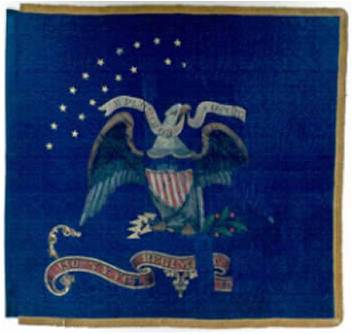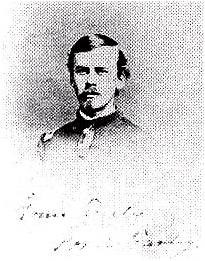Captain Porter Farley
Captain Porter Farley, 140th New York Infantry, provided an account which shows a genuine “tenderness of heart even to his enemies in time of trouble” – an incident which occurred in front of the Stafford outposts of his regiment:
“On Tuesday, March 24th, our regiment went out again on picket duty, proceeding this time to a portion of the line farther south than that which we had picketed before, our extreme right posts being upon Potomac Creek, and our left extending nearly to the line guarded by the Second Corps. Shortly after we had reached our positions and had posted our men we learned from some boys belonging in the neighboring farm-houses, that a young lady had that night died just outside our lines, not an eighth of a mile distant. I went with several other officers to see if we could do anything for the family. As we walked along, the boys told us that the lady of the house was Mrs. Edrington [Sarah A. Withers Edrington, born c.1817], a widow, who for more than a year past had been living alone with her daughter, the girl now lying dead, her only other child being a son, [Charles W. Edrington, Company A, 47th Virginia Infantry], who was in the rebel army.”
Farley continued: “When we reached the house, we found it to be one of the better kind of hewn-log houses so common in Virginia. We entered and found everything exceedingly neat, but with all the signs of poverty which comes with war. The old lady seemed quite intelligent and much more refined than her poor surroundings would lead one to expect. She received us kindly, accepting our visit in the same spirit in which it was made. She bore her affliction with great fortitude, though it was perfectly evident that she felt the full weight of it. With her were three or four girls, sixteen or eighteen years of age, from neighboring farm-houses. At one side of the room in which we were received was the body of the dead girl, decently laid out and with some trifling attempt at adornment, such as their poverty admitted. The body was covered with a white cloth, but the mother took it off and showed us her daughter. The face in death was one of really sweet and peaceful beauty, and we wondered that it could be so when the old lady told us of the sudden and agonizing way in which she had died. The disease must have been something like spotted fever.”
(“Spotted fever,” a noun for various, often fatal infectious diseases, such as Rocky Mountain spotted fever, characterized by skin eruptions and transmitted by ticks and mites. It also refers to an “epidemic form of cerebrospinal meningitis,” likely in this case.)
Farley continued, “It was of only a few hours duration. She had been terribly discolored and a raving maniac during her last hours, but no trace of the terrible struggle now remained and her face was white and placid. Mrs. Edrington showed us pictures of her daughter and son, and told us the boy was in the Confederate army, but all without any bitter remarks or the exhibition of any unkind feelings toward us. We found that a surgeon from some other regiment had been with them during the young lady’s sickness, and had promised to secure a coffin from the quarter-master’s department and send it out to the farm-house. The boys who had first told us of the matter were engaged in digging a grave in the garden, for the want of any vehicle and the bad condition of the roads made it impossible to take the body to the family burial ground, eight miles distant. We could do nothing but express our sympathy and leave them.” Late that afternoon a boy told them that the old lady had been taken sick in the same way her daughter had. They sent for one of their regimental surgeons, who saw her, did what he could, and left her in care of young neighborhood women. Early the next day they told the Federals that Mrs. Edrington was dying and none dared stay with her. Farley went with a sergeant. They found the frightened young women and boys watching through the window. The soldiers went into the room noting, “In her delirium she had thrown herself off the bed upon the floor, and there beside the unburied body of her child she was writhing in her death agonies. Her face was a dreadful livid color. She had torn out her hair by handfuls, and was wild, but speechless.”
They cared for her and unsuccessfully tried to get the youngsters to assist. An hour later she died, and mother and daughter were buried in the garden. After Chancellorsville, Farley visited their graves. The “whole scene”, Farley added, was “one of perfect desolation.” He wondered if the son ever learned the story and “might someday come back and see the ruin which death and war had brought upon him.”
(It is believed that the Edrington farm was west of the intersection of Airport Road and Mountain View Road.)


